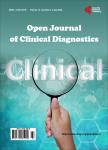Patterns and Trends in Diagnostic Tests Used for Detection of Colorectal Cancer after Screening with the Immunochemical Fecal Occult Blood Test in Japan
Patterns and Trends in Diagnostic Tests Used for Detection of Colorectal Cancer after Screening with the Immunochemical Fecal Occult Blood Test in Japan作者机构:Department of Pharmacoepidemiology Graduate School of Medicine and Public Health Kyoto University Kyoto Japan Center for Innovative Clinical Medicine Okayama University Hospital Okayama Japan Cancer Screening Technology Division Research Center for Cancer Prevention and Screening National Cancer Center Tokyo Japan Department of Radiology Jichi Medical University Tochigi Japan Division of Drug Development and Regulatory Science Faculty of Pharmacy Keio University Tokyo Japan
出 版 物:《Open Journal of Clinical Diagnostics》 (临床诊断学期刊(英文))
年 卷 期:2015年第5卷第3期
页 面:107-116页
学科分类:1002[医学-临床医学] 100214[医学-肿瘤学] 10[医学]
主 题:Colorectal Cancer Screening Diagnostic Test iFOBT Optical Colonoscopy Barium Enema
摘 要:According to the guidelines by the Japanese government, optical colonoscopy is the most strongly recommended diagnostic test after screening with the immunochemical fecal occult blood test (iFOBT), followed by double-contrast barium enema (BE) or sigmoidoscopy. Our study was to assess patterns and trends of colorectal cancer (CRC) diagnostic testing within 2 years after iFOBT. We analyzed both iFOBT results and claims data provided by employee health insurance societies in Japan from 2005 to 2010. 25,596 enrollees underwent iFOBT screening. The positive rate was 5.1%. 32.3% of those positive underwent diagnostic tests and 1.0% (12 patients) were confirmed as having cancer. The most common test was optical colonoscopy (77.2% of total tests), followed by BE (16.2%). From 2006 to 2009, the rate of optical colonoscopy for females increased from 55% to 82% and that of BE declined from 36% to 12%, while no significant changes were seen for males. Only one-third of those who tested positive underwent diagnostic test in the 2 years following screening iFOBT. As official guidelines for diagnostic testing of CRC recommend, optical colonoscopy is now the most commonly used diagnostic test after positive iFOBT result for enrollees in employee health insurance societies in Japan.



